
Background information
Dragon Quest VII Reimagined looks amazing
by Kevin Hofer

Vagrant Story was released 25 years ago at a time when the PS1 was slowly being replaced by the PlayStation 2. The JRPG offered innovative gameplay and the most beautiful graphics of the console generation. What I remember most, however, is the superb story.
During PS1 era, Squaresoft – now Square Enix – stood for bold, innovative games. In addition to the well-known Final Fantasy, their range of games also includes insider tips such as Xenogears and Parasite Eve. Late in the life cycle of Sony’s first console, however, one more first-class game was released, almost getting lost in the hype surrounding the PlayStation 2.
Vagrant Story is dark. This applies to both the story and the setting. It sets the game far apart from the colourful JRPGs of the PS1 era. As a 17-year-old going through a goth phase in 2000, it was perfect for me.
I was impressed by how it looked from the very first moment. Real-time rendering is used instead of pre-rendered backgrounds. Although this pushes the PS1 to the limits of its performance, it allows for cinematic sequences. This is where the genius of director Yasumi Matsuno, who already proved his talent for storytelling with Final Fantasy Tactics, comes to the fore.
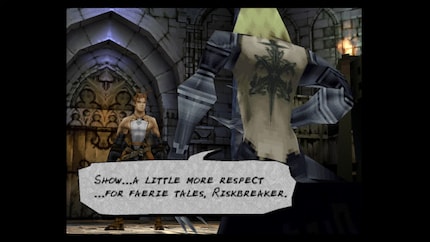
Development for the game began in 1998. From the very beginning, Matsuno wanted to create an RPG that differed from the mainstream of the time. Final Fantasy was comparable to a big Hollywood production, whereas Vagrant Story was intended to be like an independent film. For him, this also meant that the title wouldn’t be aimed at casual players but hardcore gamers. When I played the game, I knew nothing of Matsuno’s vision, but it fit my Y2K self like a glove. I was a hardcore gamer, and anything mainstream was horrifying to me – except Final Fantasy.
Although Matsuno wanted to do many things differently, the story contains ideas and concepts that he also dealt with in Final Fantasy Tactics: differences in class, the corruption of spiritual leadership, political intrigue and a civil war take centre stage. I loved it in 1997 with Tactics and I loved it again in 2000 with Vagrant Story. On top of that, they’re both set in the same world: Ivalice. Later, it would also serve as a location in Final Fantasy XII.
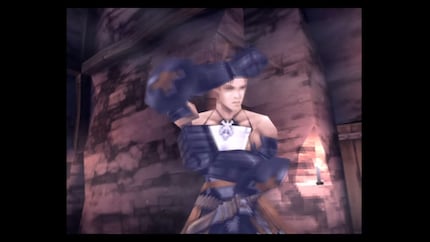
The story begins in a dimly lit back room at the headquarters of the Valendia Knights of Peace (VKP). The discussion here surrounds the leader of the Müllenkamp Sydney Losstarot religious terrorist group. He just took hostages in Duke Bardorba’s estate.
The VKP decide to storm the estate under a pretext, kill Losstarot and thus put an end to Müllenkamp. Elite soldier Ashley Riot is to take over. He’s sceptical at first. Duke Bardorba already controls the Templars, an organisation responsible for his security. But as it turns out, the duke is financing Müllenkamp.
As a result, Ashley is sent to the city of Leá Monde to investigate further. Several parties come together here. All of them are looking for a key that’ll give them control over the darkness. What exactly this key is and what the various factions want to use it for becomes clear as the game progresses.
The story is simply brilliant. It develops cleverly, subtly and at a good narrative pace. As a youth, I could identify with Ashley’s inner conflict about what’s right or wrong. The fact that I then felt like I was in a spy thriller with a medieval RPG setting was the icing on the cake. As Ashley explores the city, I, the player, am introduced to a story of religious intrigue and class struggle in a world of dragons, demons and ghosts.
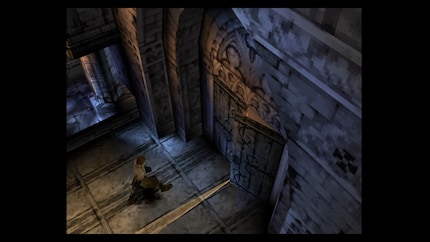
The story isn’t just brilliantly written, it’s visuals are also amazingly put together, evident from every cutscene in the game. Bold camera angles and shots allow me to fully immerse myself in the story. If the cutscenes were recreated one-to-one in real life, they’d still be a lesson in cinematography today. On the PS1, only Metal Gear Solid comes close.
However, the decision to render the game completely in 3D also had a huge impact on the narrative – Matsuno had to massively cut down the story. I knew nothing about this in 2000. I didn’t notice it then, nor do I notice it now. It’s a testament to Matsuno’s genius that he’s still able to tell a well-rounded story.
Despite these limitations, Vagrant Story is one of the most beautiful, if not the most graphically impressive game on the PS1. When I look at what the developers got out of the weak hardware, I’m still impressed today. Environments are extremely detailed and its characters are superbly animated – including the smallest changes in gestures and facial expressions.
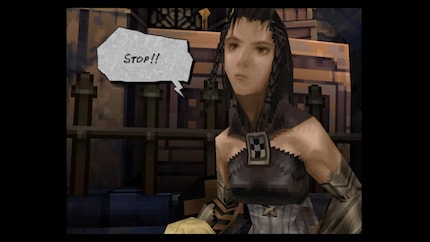
The design of Leá Monde still stands out for me today, inspired by the French town of Saint-Émilion. Matsuno and his team even visited the city that inspired them in order to recreate its virtual counterpart as authentically as possible – definitely worth it. Leá Monde doesn’t just look good, it feels like a real city.
Vagrant Story reminds me of a comic. I like the use of light and shadow to craft an impressive game atmosphere. Characters always stand out from the backgrounds with a slight shimmer. There are also text bubbles that complement the comic look.
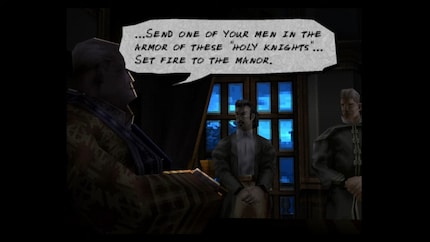
All of this is accompanied by a gloomy soundtrack that perfectly captures the tone of the game. For me, however, no one piece stands out in particular. I don’t listen to the music outside of the game either.
Exploring Leá Monde is fun, partially because I’m constantly rewarded with new items. The city is a vast labyrinth of damp cellars, underground caves, rich green districts, misty forests and ruined tombs. It feels like a world of its own, a beautiful yet terrifying network of winding alleyways and dense treasure chambers. When I descend into a catacomb for the first time, I get goose bumps, the atmosphere is just that great.
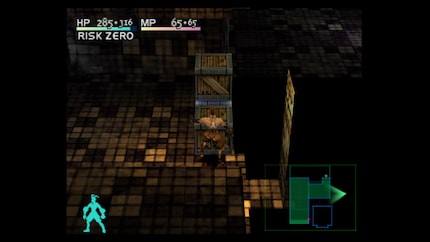
The combat is an interesting mix of action and strategy. If an enemy approaches me, I can draw my weapon at the touch of a button. This pauses the game, and a ball with lines appears around Ashley. This denotes his action radius. I can now order him to attack different parts of an enemy’s body. As it turns out, certain body parts are weaker – something I can take advantage of.
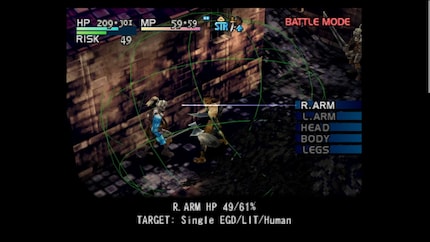
The system is supplemented by a series of skills that Ashley learns over time, which I assign to specific buttons. If I press them at the right time during an attack, I can add another thrust to the original one.
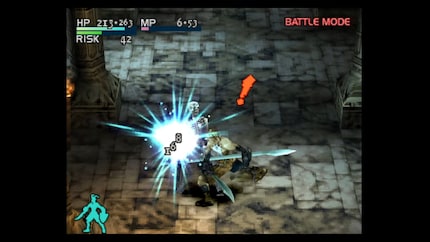
Stringing together moves this way also increases the so-called risk meter. This increases the likelihood of an attack failing or Ashley taking more damage.
I assemble weapons from parts I find. There are sharp, blunt and pointed types. I can also give them elemental buffs. Depending on the enemy, this gives me an advantage since they’ll be weak against certain weapon types or elements.
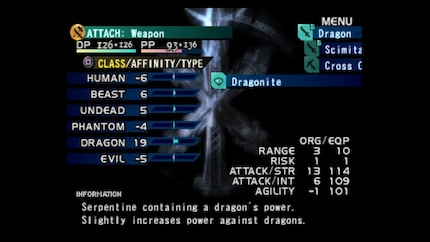
The system itself is great, just unfortunate it’s held back by several annoying points. My biggest point of criticism is the horribly long loading times of the PS1. If I put my items in a box, for example, it takes ages to save them. I almost fall asleep – and not just while loading, during fights too. Some of the combat animations are so long that I could grab a packet of chips from the kitchen while they play. The whole thing is garnished by unintuitive menus I have to switch through far too often while preparing for battles. This slows down the flow of the game enormously, and I spend much more time preparing than fighting. So much, in fact, I almost put the game down the first time I played it.
Seeing as the game almost went under on release, things don’t look any better today. Officially, it’s only available on PS1 or via the PlayStation Network for PS3, PSP or Vita. I had to emulate it on PC so I could look at it again for this article. Given all this, fans have long been wishing for a modern version or a successor. So far, however, we haven’t heard a peep. Too bad, I’d love to dive into the world of Ivalice again.
From big data to big brother, Cyborgs to Sci-Fi. All aspects of technology and society fascinate me.
Interesting facts about products, behind-the-scenes looks at manufacturers and deep-dives on interesting people.
Show all
Background information
by Kevin Hofer

Background information
by Kevin Hofer

Background information
by Kevin Hofer